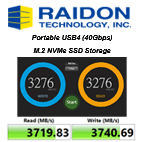Plexistor Software-Defined Memory Platform Boosts MongoDB Performance
"Up to 450%"
This is a Press Release edited by StorageNewsletter.com on February 19, 2016 at 2:58 pmPlexistor Ltd. released results of benchmarking that showed performance improvements of MongoDB 3.2 with its Software Defined Memory (SDM) architecture.
 Company’s converged SDM solution increases MongoDB performance by 450%, without sacrificing data persistency, in internal testing.
Company’s converged SDM solution increases MongoDB performance by 450%, without sacrificing data persistency, in internal testing.
Open-source MongoDB databases offer features for enterprise-scale applications like analytics, serving content, and Internet of Things. MongoDB has been installed millions of times in hundreds of organizations around the world, including more than a third of the Fortune 100.
MongoDB achieves its best performance when the complete working data set fits in memory. However, with typical enterprise data sets reaching terabytes or petabytes, exceeding physical memory capacity, working sets are ‘sharded’ or broken apart and distributed on multiple machines to maintain appropriate speed. Sharding is complex, incurs added costs, increases risk of data loss, and does not scale well.
With firm’s SDM platform, MongoDB applications can achieve near-memory speed without expensive server hardware. Tests performed on a mid-range Intel CPU resulted in over 150,000 transactions per second while maintain transaction safety.
“Storage is the number-one performance bottleneck in MongoDB architectures,” said Dr. Amit Golander, CTO and head of R&D, Plexistor. “By converging memory and storage technologies, Plexistor SDM delivers persistent high capacity storage at near-memory speed to enable critical enterprise applications with no need to shard the data, buy expensive hardware or memory modules.”
In-memory databases, NoSQL, real-time analytics, and complex event processing challenge traditional compute and storage resources. Firm’s converged SDM solution runs both in-memory and traditional enterprise applications on a single infrastructure, without dedicated clusters, simplifying the data center architecture and management and reducing costs. It also allows users to leverage new and upcoming memory and storage technologies like volatile DRAM and emerging Non-Volatile memory devices such as NVDIMM-N and 3D XPoint as well as traditional flash storage devices such as NVMe and the upcoming NVMe over Fabric,
Free community edition of company’s software solution is available for both on-premise and cloud-based deployment on EC2 for AWS.














 Subscribe to our free daily newsletter
Subscribe to our free daily newsletter


